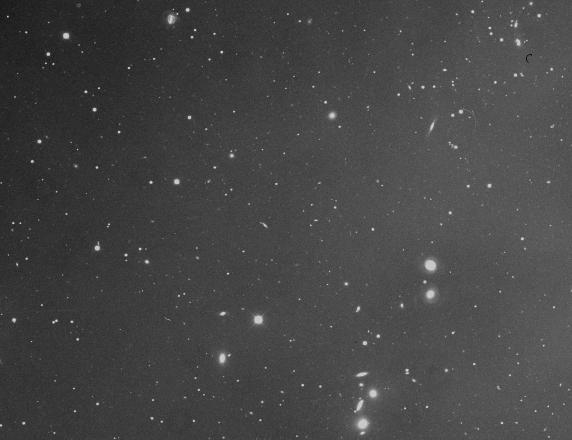 A piece of history ....
A piece of history .... This is (only) a portion of a digitized IIIa-J photographic plate, exposed at prime focus of the Kitt Peak National Observatory's 4m Mayall telescope using a GG385 filter (photographic BJ band). The exposure length is roughly 45 minutes, the 50% detection limit to B=24, and the displayed area about 20x15 arcminutes. The entire area covered by the plate is close to one square degree, while the usable fraction (due to pin-cushion distortion) is roughly 1/3 of a square degree (the inner 20 arcminutes in radius).
The field (08h42m+44:47) is referred to as Lynx-2, and is one of several fields in which redshift surveys of faint quasars and galaxies have been conducted at Kitt Peak. Plates like these, taken in four photographic bands (U,BJ,RF,IN), were used to identify sources, as well as to measure their apparent brightness and colors. Observations at radio and near-infrared wavelengths subsequently have been made for many of the sources detected in these fields. The plates have also been used to study the properties of Galactic stellar populations, including their proper motions. The entire plate set spans over 18 years, and forms a unique sample in depth and duration for studying the variability properties of faint field stars and quasars. Over half a dozen thesis have come out of this plate set alone.
Photographic imaging is a technology mostly superseded by large-format CCD detectors. However, only since the late 1990's have CCD cameras with mosaics of detectors been able to reproduce the same areal coverage and resolution as in this photographic image. We are currently in the process of re-imaging these deep photographic fields to even greater depths and higher spatial resolution with CCDs on ground-based telescopes and the Hubble Space Telescope.